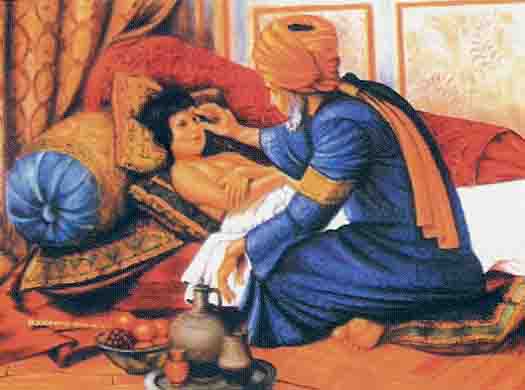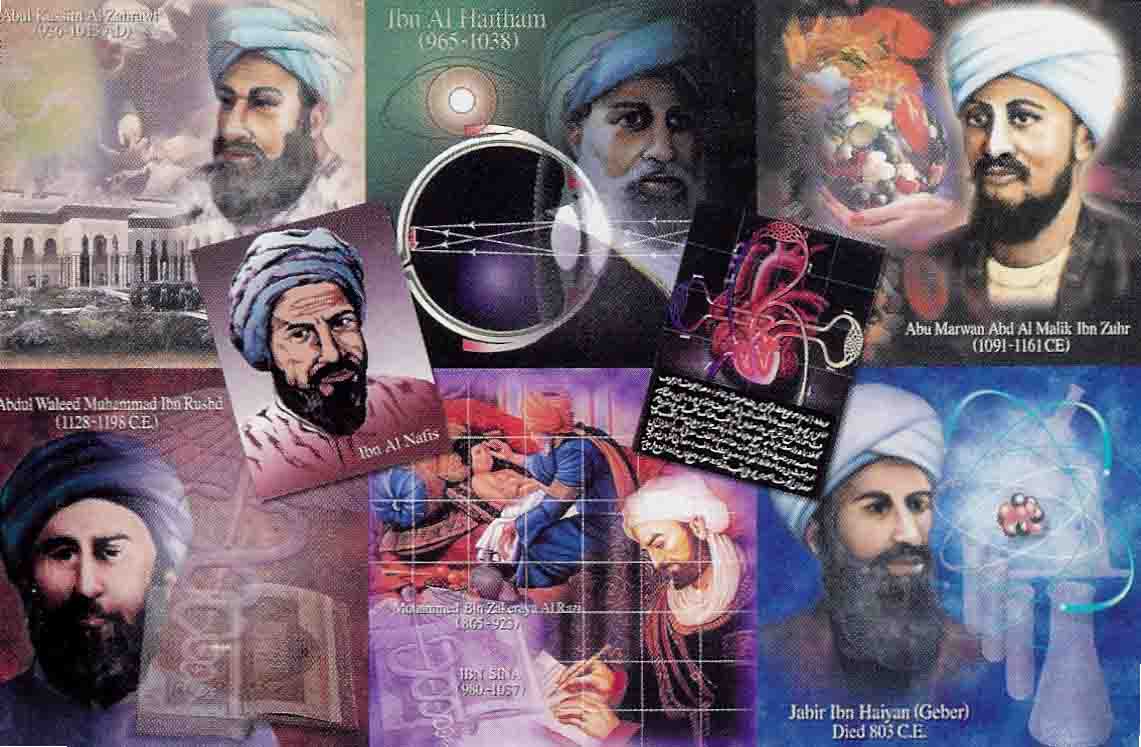Jabir Ibn Haiyan, the alchemist Geber of the Middie Ages, is generally known
as the father of ehemistry. Abu Musa Jabir Ibn Hayyan, sometimes called
al-Harrani and al-Sufi, was the son of the druggist (Attar). The precise
date of his birth is the subject of some discussion, but it is established that
he practised medicine and alchemy in Kufa around 776 A.D. He is reported to have
studied under Imam Ja'far Sadiq and the Ummayed prince Khalid Ibn Yazid. In his
early days, he practised medicine and was under the patronage of the Barmaki
Vizir during the Abbssid Caliphate of Haroon al-Rashid. He shared some of the
effects of the downfall of the Barmakis and was placed under house arrest in
Kufa, where he died in 803 A.D.
Jabir's major contribution was in the field of chemistry. He introduced
experimental investigation into alchemy, which rapidly changed its character
into modern chemistry. On the ruins of his well-known laboratory remained after
centuries, but his fame rests on over 100 monumental treatises, of which 22
relate to chemistry and alchemy. His contribution of fundamental importance to
chemistry includes perfection of scientific techniques such as crystalization,
distillation, calcination, sublimation and evaporation and development of
several instruments for the same. The fact of early development of chemistry as
a distinct branch of science by the Arabs, instead of the earlier vague ideas,
is well-established and the very name chemistry is derived from the Arabic word
al-Kimya, which was studied and developed extensively by the Muslim
scientists.
Perhaps Jabir's major practical achievement was the discovery of mineral and
others acids, which he prepared for the first time in his alembic
(Anbique). Apart from several contributions of basic nature to alchemy,
involving largely the preparation of new com- pounds and development of chemical
methods, he also developed a number of applied chemical processes, thus becoming
a pioneer in the field of applied science. His achievements in this field
include preparation of various metals, development of steel, dyeing of cloth and
tanning of leather, varnishing of water-proof cloth, use of manganese dioxide in
glass-making, prevention of rusting, letterring in gold, identification of
paints, greases, etc. During the course of these practical endeavours, he also
developed aqua regia to dissolve gold. The alembic is his great invention, which
made easy and systematic the process of distillation. Jabir laid great stress on
experimentation and accuracy in his work.
Based on their properties, he has described three distinct types of
substances. First, spirits i.e. those which vaporise on heating, like camphor,
arsenic and ammonium chloride; secondly, metals, for example, gold, silver,
lead, copper, iron, and thirdly, the category of compounds which can be
converted into powders. He thus paved the way for such later classification as
metals, non-metals and volatile substances.
Although known as an alchemist, he did not seem to have seriously pursued the
preparation of noble metals as an alchemist; instead he devoted his effort to
the development of basic chemical methods and study of mechanisms of chemical
reactions in them- selves and thus helped evolve chemistry as a science from the
legends of alchemy. He emphasised that, in chemical reactions, definite
quantities of various substances are involved and thus can be said to have paved
the way for the law of constant proportions.
A large number of books are included in his corpus. Apart from chemistry, he
also contributed to other sciences such as medicine and astronomy. His books on
chemistry, including his Kitab-al-Kimya, and Kitab al-Sab'een were
translated into Latin and various European languages. These translations were
popular in Europe for several centuries and have influenced the evolution of
modern chemistry. Several technical terms devised by Jabir, such as alkali, are
today found in various European languages and have become part of scientific
vocabulary. Only a few of his books have been edited and published, while
several others preserved in Arabic have yet to be annotated and published.
Doubts have been expressed as to whether all the voluminous work included in
the corpus is his own contribution or it contains later commentaries/additions
by his followers. According to Sarton, the true worth of his work would only be
known when all his books have been edited and published. His religious views and
philosophical concepts embodied in the corpus have been criticised but, apart
from the question of their authenticity, it is to be emphasised that the major
contribution of Jabir lies in the field of chemistry and not in religion.
His various breakthroughs e.g., preparation of acids for the first time, notably
nitric, hydrochloric, citric and tartaric acids, and emphasis on systematic
experimenta- tion are outstanding and it is on the basis of such work that he
can justly be regarded as the father of modern chemistry. In the words of Max
Mayerhaff, the development of chemistry in Europe can be traced directly to
Jabir Ibn Haiyan.















